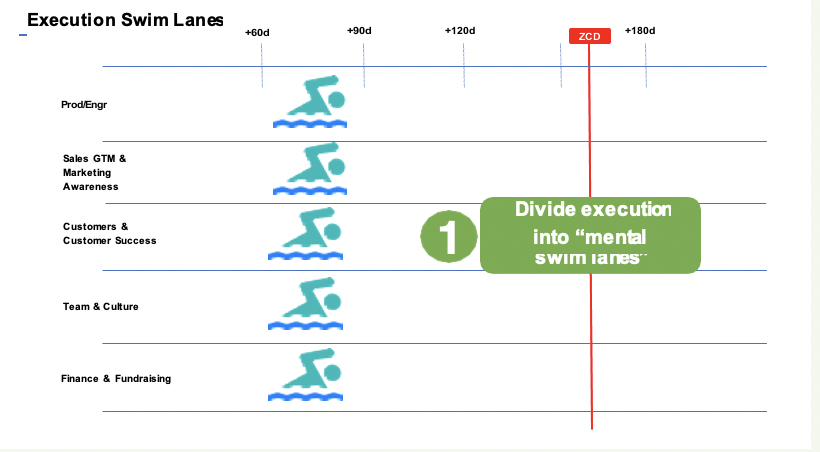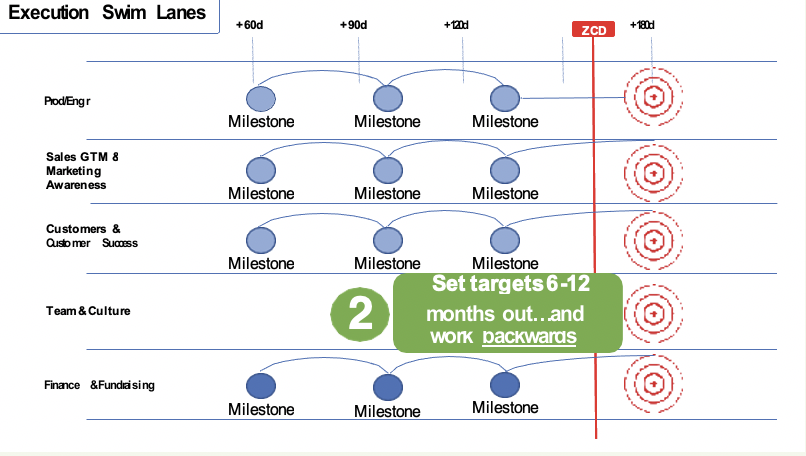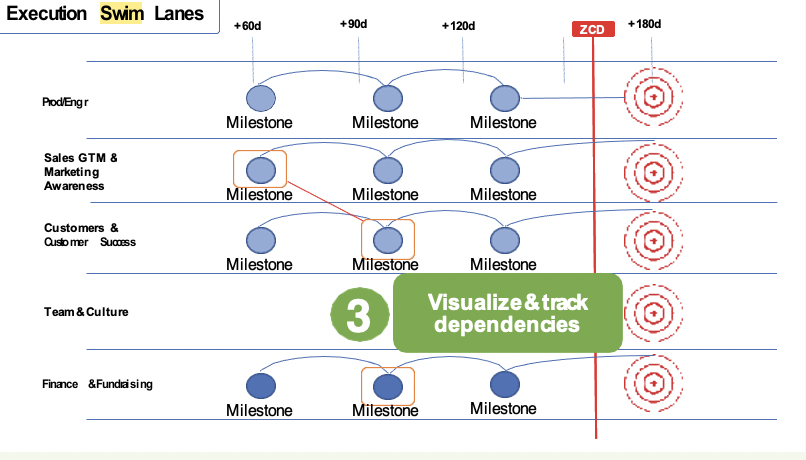
Advice for First-time CEOs: Think in Swim Lanes

As we heard in our recent podcast, in the very early stages of an enterprise startup, searching for Product-Market Fit often means the CEO is absorbed with building the product. Or perhaps the first-time CEO comes from sales or marketing and naturally gravitates to their comfort zone—spending time with customers. This is natural. Yet, very quickly, the enterprise startup needs the CEO to be the leader for all aspects of the business. The CEO must think and spend time differently. The CEO must break out of the comfort zone and unlearn skills and lessons that worked in the past, in order to do a more holistic job. But how? By thinking in “swim lanes.”
Bob: “I struggled with this transition. Inertia led me to spend 80 percent of my time on product and customers, iterating and trying to win. That’s where my comfort zone was. But the team needed me to be working on the overall company and, very importantly, charting the execution path forward for the team. A CEO coach pushed me to adopt a new mindset: Think in swim lanes. It was a powerful tool that snapped my mindset to be a more holistic CEO and help chart the path for the company.
I drafted my swim lane plan in pencil on an 11 by 14 sheet of paper. That drawing became the map for what we needed to do, how I spent my time, how things were linked, and how we measured progress. It was a living document that evolved with the company. It hung on the wall of my office, eraser marks and all. I still have it.”
The swim lane model
To create a swim lane plan, do three things:
- Define the swim lanes: What are the major swim lanes for the whole company? Examples could be: Product/ Engineering, GTM Sales and Marketing, Customers & Customer Success, Team & Culture, Financials & Fundraising (or whatever make sense for your team).
- Set the target and work backwards. Establish a medium-term target for each swim lane, which could be 6, 12, 18 or 24 months out (again whatever timeframe makes sense for your team). And then work backwards from there, setting key interim milestones that indicate success.
- Nail down dependencies. Link milestones and interdependencies across the swim lanes.
Suggestion: To make clear how goals and progress relate to raising capital, add a line (and update it over time) for when the startup runs out of cash (ZCD = Zero Cash Date).
Step 1: Define swim lanes for the whole company
Draw a set of the major swim lanes for company execution.
Add a line for the company’s zero-cash date. Move the date as the company’s financial situation changes.

Step 2: Establish a medium-term target for each swim lane and work back from there
On the farthest right column, write down the key long-term outcomes the company is aiming for.
Now work backward to identify the key interim milestones that will tell you are on track. This is harder than it sounds, particularly when you’ve been living in iteration mode of just putting one foot in front of the other.

Step 3: Link milestone dependencies across different swim lanes
This is the time to think about dependencies. What mile- stones in one lane depend on milestones in other swim lanes? Does a sales target require a key product capability? Does achieving a product goal require a key resource to be on board by a certain time? Is a delayed milestone in one area impacting another?
Since this is a living, breathing document, feel free to do it with paper and pencil. Beauty is not the goal; utility is.

The swim lane model helps CEOs move out of their comfort-zone and develop a holistic mindset. It maps out an execution plan that moves beyond one-foot-in-front-of-the-other iterative execution. It provides the team with a powerful communication tool. It reveals where the CEO spends time, rightly or wrongly. It provides an early warning system for where a company is off track. It allows the CEO to become what the company needs: a leader who sees across the company, thinks ahead while working backward, and who leads the rest of the team to do the same.
Hear our Surivival to Thrival Podcast on thinking in swimlanes.